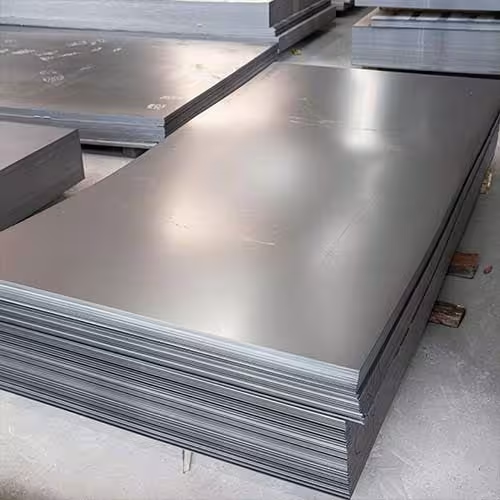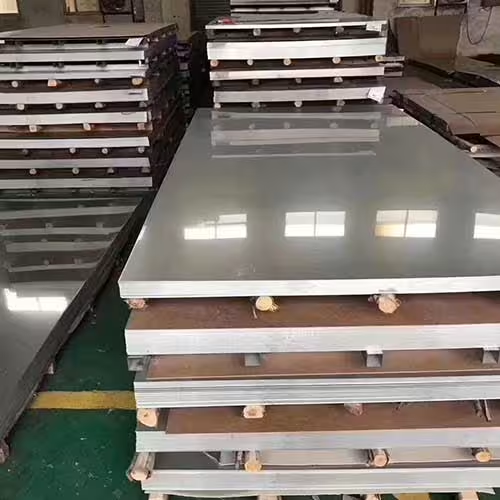Welcome to My Blog!
Before we dive into the content, I’d love for you to join me on my social media platforms where I share more insights, engage with the community, and post updates. Here’s how you can connect with me:
Facebook:https://www.facebook.com/profile.php?id=61565500692293
Now, let’s get started on our journey together. I hope you find the content here insightful, engaging, and valuable.
Table of Contents
Introduction

Steel plate gauge thickness plays a critical role in determining the strength, durability, and application of steel plates in various industries. From construction and manufacturing to automotive and shipbuilding, selecting the right steel plate gauge thickness ensures structural integrity and cost efficiency. Understanding how steel plate gauge thickness affects performance helps industries make informed decisions when choosing materials for different projects.
This comprehensive guide explores the significance of steel plate gauge thickness, its impact on performance, and how to choose the best thickness for specific applications.
Understanding Steel Plate Gauge Thickness
What Is Steel Plate Gauge Thickness?
Steel plate gauge thickness refers to the measurement of a steel sheet or plate in terms of gauge numbers rather than millimeters or inches. Unlike other measurement systems, gauge numbers decrease as the thickness increases. For example, a 10-gauge steel plate is thicker than a 16-gauge steel plate.
How Steel Plate Gauge Thickness Is Measured
Steel plate gauge thickness is measured using a standardized gauge chart, which provides a direct conversion to millimeters and inches. The thickness varies depending on the type of steel, such as carbon steel, stainless steel, or galvanized steel.
Why Steel Plate Gauge Thickness Matters
Choosing the right steel plate gauge thickness affects several performance factors, including:
- Load-bearing capacity – Thicker plates handle more weight and pressure.
- Flexibility and bendability – Thinner plates are easier to shape and bend.
- Durability – Thicker plates offer better resistance to wear and tear.
- Cost efficiency – Balancing material cost with performance needs is crucial.
Impact of Steel Plate Gauge Thickness on Performance


Structural Strength and Load Capacity
Steel plate gauge thickness directly influences structural strength and the ability to withstand heavy loads. Thicker steel plates are commonly used in construction, bridges, and industrial machinery where high strength is required.
For example:
- Thin-gauge steel plates (16-22 gauge) – Suitable for automotive parts, roofing, and lightweight structures.
- Medium-gauge steel plates (10-14 gauge) – Used in machinery components, storage tanks, and fabrication.
- Thick-gauge steel plates (4-8 gauge) – Preferred for heavy-duty applications like shipbuilding and military armor.
Flexibility and Machinability
Thinner steel plates are easier to cut, bend, and shape, making them ideal for applications requiring precision forming. In contrast, thicker plates require more force and specialized equipment for processing.
Durability and Wear Resistance
Thicker steel plates generally last longer under harsh conditions, providing better resistance to impact, corrosion, and abrasion. Industries such as mining and marine construction rely on thick steel plates for longevity.
Thermal and Electrical Conductivity
Steel plate gauge thickness can impact thermal and electrical conductivity, affecting performance in applications like heat exchangers and electrical enclosures.
Cost and Material Efficiency
Using the optimal steel plate gauge thickness helps balance cost and material efficiency. Over-specifying thickness increases costs unnecessarily, while under-specifying leads to performance failures.
Comparing Steel Plate Gauge Thicknesses
The following table provides a comparison of different steel plate gauge thicknesses and their typical applications:
| Gauge Number | Thickness (Inches) | Thickness (Millimeters) | Common Applications |
|---|---|---|---|
| 22 | 0.0299 | 0.759 | Roofing, automotive panels |
| 18 | 0.0478 | 1.214 | HVAC systems, enclosures |
| 14 | 0.0747 | 1.897 | Storage tanks, industrial equipment |
| 10 | 0.1345 | 3.416 | Machinery components, heavy-duty construction |
| 7 | 0.1793 | 4.554 | Shipbuilding, pressure vessels |
| 4 | 0.2242 | 5.694 | Bridges, military armor |
Understanding this table helps industries select the most suitable steel plate gauge thickness based on strength, flexibility, and durability requirements.
Choosing the Right Steel Plate Gauge Thickness

Assess Application Requirements
Different industries have unique requirements when it comes to steel plate gauge thickness. For example:
- Construction – Requires thick plates for support beams and infrastructure.
- Automotive – Uses thinner plates for lightweight vehicle components.
- Aerospace – Balances weight and strength with medium-gauge plates.
Consider Environmental Factors
Steel plate gauge thickness should be chosen based on environmental exposure. Corrosive environments, such as marine applications, require thicker plates with protective coatings.
Evaluate Load and Stress Factors
Calculating the load-bearing requirements helps determine the best steel plate gauge thickness. Engineers and designers use stress analysis to ensure safety and efficiency.
Factor in Manufacturing Processes
The ability to cut, bend, and weld steel plates depends on gauge thickness. Selecting the right thickness improves fabrication efficiency and reduces production costs.
Balance Cost and Performance
Optimizing steel plate gauge thickness ensures a balance between material cost and performance needs, helping industries maximize efficiency.
Conclusion
Steel plate gauge thickness plays a crucial role in determining the strength, durability, and application of steel plates across various industries. From construction and manufacturing to shipbuilding and automotive production, choosing the right gauge thickness impacts load capacity, flexibility, and longevity.
Jiuyang sells a variety of metal plates, such as carbon steel plates, stainless steel plates, copper plates, galvanized plates, alloy steel plates, etc. If you want to know more, you can contact us.
FAQ
What is the most common steel plate gauge thickness?
The most commonly used steel plate gauge thickness ranges from 10 to 18 gauge for general applications, including construction, automotive, and industrial equipment.
How do I choose the right steel plate gauge thickness for my project?
Consider factors such as load capacity, flexibility, durability, environmental exposure, and manufacturing requirements when selecting steel plate gauge thickness.
Does thicker steel plate gauge thickness always mean better performance?
Not necessarily. While thicker plates provide more strength and durability, they can be harder to work with and increase material costs. Choosing the appropriate thickness based on application needs is essential.
Can thinner steel plates be reinforced for added strength?
Yes, techniques like ribbing, layering, or using high-strength steel alloys can reinforce thinner steel plates without increasing overall thickness.
How does steel plate gauge thickness affect welding and fabrication?
Thicker steel plates require more power and specialized equipment for welding and cutting, while thinner plates are easier to fabricate but may be more prone to deformation.

